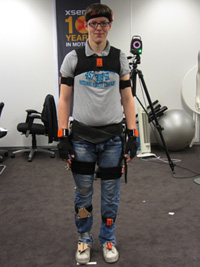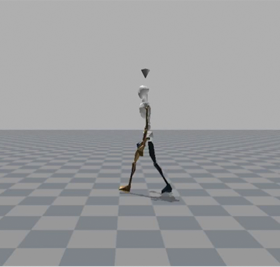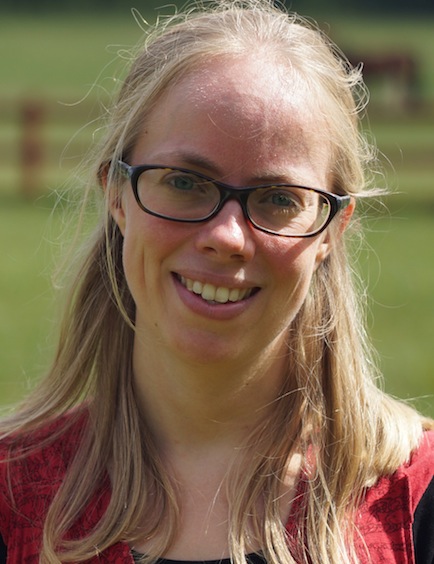Position and orientation estimation using inertial sensors - A summary of my research
My research is on position and orientation estimation using inertial sensors. The application areas for this type of research are endless. For instance, one can use these sensors to localize firefighters inside buildings or to determine the orientation of an airplane. An example that I have been working with is that of human body motion capture. In this application we compute the position and orientation of each body segment, i.e. we estimate how the body moves. For this, a number of inertial sensors are placed on a human body. Our experimental setup is shown in Figure 1, where the orange boxes contain the sensors. A snapshot of the computed body movement is shown in the right plot in Figure 1. These results can for instance be used in the game or movie industry, but also in fields like rehabilitation or ergonomics.

Figure 1: Left: person wearing different sensors on his body. Right: graphical representation of what the body looks like while he is walking. Courtesy of Xsens Technologies.
The term "inertial sensor" refers to the combination of accelerometers and gyroscopes. When the sensor is lying still, its accelerometer measures the earth's gravity. The accelerometer has three axes and hence, when you rotate the sensor, the gravity is measured in a different axis. Because of that, accelerometers provide information about the orientation of the sensor. When the sensor is moving, it also measures the actual acceleration of the sensor. This can be used to determine the change in position of the sensor. Gyroscopes measure the sensor's angular velocity, thereby proving information about the change in orientation.
I work on combining measurements from inertial sensors both with measurements from other sensors and with different models. An example of a different sensor we are using is a magnetometer, which you can think of as a compass. An example of a model we are using is a biomechanical model. This is used in the motion capture application mentioned above. In the biomechanical model we assume that the body segments remain attached to each other during the data collection, i.e. that the person does not loose any body parts during the experiment.
It is important to realize that no sensor or model is perfect. Any sensor has measurement noise and can be in need of calibration. All models are approximations of reality. Hence, we need to be able to deal with uncertainty and model how much we trust each source of information.
With the current developments in sensor quality, sensor availability and computational power, I expect that more and more exciting applications will come up in this interesting field of research.

PhD Student in Automatic Control
(Swedish: Doktorand)
- Phone:
- +46 13 284043
- E-mail:
- manko_at_isy.liu.se
- Address:
- Dept. of Electrical Engineering
- Linköping University
- SE-581 83 Linköping
- Sweden
- Visiting Address:
- Campus Valla
- Building B
- Room 2A:511 (in the A corridor on the ground floor between entrance 25 and 27)
Page responsible: Manon Kok
Last updated: 2014-12-03
 LiU startsida
LiU startsida
